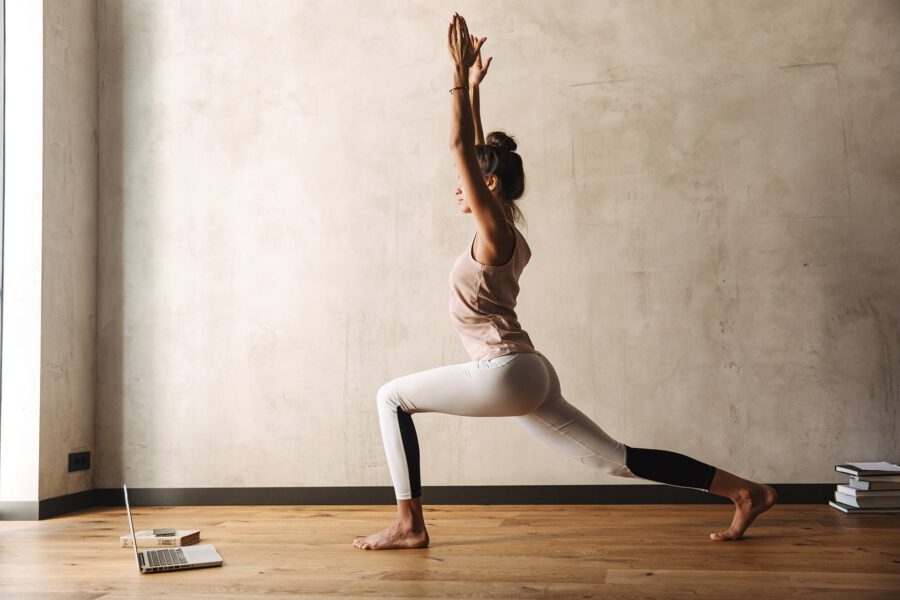The Benefits Of Plyometric, Isometric and Strength Exercises
There are different types of exercises, and each of them has its own unique advantages.
If you want to get stronger, build lean muscles, lose weight or increase your endurance, there’s always an exercise technique for you to try out.
After all, your body evolves to whatever challenges that are thrown at it.
That means your muscles, bones, and nervous system will adapt to the demands you are putting on it.
This article will show you some effective exercise training techniques you could use to build your body according to your goals.
Exercise plays a big factor in keeping your health in check. The good thing is you have the freedom to choose the type of exercise that will fit your style and goals.
Plyometric exercises train your muscles to produce maximum strength in the shortest possible amount of time. (Strength + Speed = Explosiveness)
It uses active lengthening followed by a quick active shortening phase of the muscles (Stretch-Shortening Cycle).
This allows athletes to produce more force and move quicker.
Being strong is different from being explosive.
Strength means being able to move an object from one place to another.
Explosiveness means being able to move fast and produce powerful movements such as changing direction or jumping high in the air.
- Box jump
- Depth push-up
- Burpee
- Boost athletic performance
- Functional
- Builds endurance and power
- Burns tons of calories
- Promotes stronger bones
- Improves balance and coordination
- Not for everybody
- High risk for injury
- Causes high stress on the joints
Plyometric exercises are suitable for real-world challenges. It also trains your reaction time which is crucial in emergency scenarios of real life.
Isometric exercises involve the active contraction of your muscles without the movements of your joints.
It creates a constant tension within the muscles by holding different challenging exercise positions for several seconds or a few minutes.
It is incredibly useful for building strength and stability while recovering from injury.
Isometric exercises are popular among rehab professionals because it can also reduce pain sensation for people who are suffering from injuries.
Since it is one of the safest forms of exercise, different types of recreational exercises use isometrics such as pilate and yoga.
- Plank
- Glute bridge hold
- Squat hold
- Improve strength
- Promotes joint stability
- Convenient and requires almost no equipment at all
- Can be used in early phase of injury rehab
- Can reduce pain
- Almost anyone can benefit from it
- Limited strength gain
- Limited endurance gain
Isometric exercises are great for creating controlled tension in your muscles. It can effectively activate your muscles and prepare them for higher intensity tasks
Strength exercises (resistance training) involves contraction of your muscles against resistance or weight.
Resistance can come from dumbbells, bands, machines, or even your own bodyweight (calisthenics).
It effectively increases your muscle size and promotes change in your body composition.
That’s why it is popular among fitness enthusiasts who want to improve their physique and overall body proportions.
- Bench press
- Deadlift
- Squat
- Improves muscle strength
- Increases muscle size (hypertrophy)
- Burns fats
- Improves body composition
- Improves posture
- Non-functional
- Limited endurance gain
An optimal resistance training increases your strength and builds your muscles, even after you finish your workout!
Your body can change and adapt according to your lifestyle.
That’s why exercise is vital in your physical health.
All forms of exercise have tremendous positive effects on the body, and it’s up to you to choose what exercise techniques will benefit you the most and will fit your goals.
The key is to train your body in all aspects of fitness to achieve all their physical benefits such as: explosiveness, strength, agility, stability and balance.
Here’s a workout that combines these exercise types:
- Whitehead, M., Scheett, T., McGuigan, M., & Martin, A. (2018). A Comparison of the Effects of Short-Term Plyometric and Resistance Training on Lower-Body Muscular Performance. Journal Of Strength And Conditioning Research
- Slimani, M., Chamari, K., Miarka, B., Del Vecchio F., & Cheour, Foued. (2016) 'Effects of Plyometric Training on Physical Fitness in Team Sport Athletes: A Systematic Review'
- Schoenfeld, B., Grgic, J., Ogborn, D., & Krieger, J. (2017) Strength and Hypertrophy Adaptations Between Low- vs. High-Load Resistance Training: A Systematic Review and Meta-analysis
- Holden, S., Lyng, K., Graven-Nielsen, T., Riel, Henrik., Olesen, J., Larsen, L., & Rathleff, M., (2020) Isometric exercise and pain in patellar tendinopathy: A randomized crossover trial
- Anwer, S., & Alghadir, A. (2014) Effects of Isometric Quadriceps Exercise on Muscle Strength, Pain, and Function in Patients with Knee Osteoarthritis: A Randomized Controlled Study.
